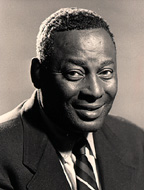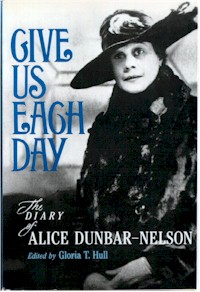Collecting Delaware Books
Three Books of Local Black History
Contents
The Underground Railroad

Charles L. Blockson's The Underground Railroad compiles first-person narratives of escapes to freedom in the North. Four of narratives are from Delaware writers or residents, either escaped slaves or white Underground Railroad workers. Further, the Harriet Tubman narrative, though listed under Maryland, deals extensively with Delaware.
The book was published in 1987 by Prentice Hall Press. The author is well-known in Delaware but is currently curator of Afro-American collection of Temple University in Philadelphia. He is largely responsible for bringing together this collection. Blockson is also author of Black Genealogy.
Although antislavery sentiment was limited to northern Delaware, there is mention of Underground Railroad stations in Camden, Dover, Blackbird, Laurel, Millsborough, Seaford, Georgetown, Lewes, Milford, Frederica, Smyrna, Delaware City, and Odessa as well as Wilmington.
One of the Delaware narratives is not from an escaped slave but Thomas Garrett, Quaker abolitionist and Tubman co-conspirator. He had a price on his head in Maryland. Garrett's home at 227 Shipley Street in Wilmington was a railroad stop and is said to have harbored 2,700 fugitives over the years.
One Delaware narrative is that of Jacob Blockson, a cousin of Charles L. Blockson's great-grandfather. It, like other stories in the book, was taken from William Still's book Underground Railroad Records, 1872.
Jacob Blockson says, "I escaped from a man by the name of Jesse W. Paten [Layton] he was a man of no business except drinking whiskey and farming. . . . He lived near Seaford, in Sussex County, Delaware.
"I left because I didn't want to stay with him any longer. My master was about to be sold out this fall, and I made up my mind that I did not want to be sold like a horse, the way they generally sold darkies then. . . ."
Though not exclusively a Delaware book, The Underground Railroad tells much of Delaware history.
The Underground Railroad in
Delaware, Maryland, and West Virginia
[Editor's note: This article has been added since Collecting Delaware Books ceased publication.]

The Underground Railroad in Delaware, Maryland, and West Virginia by William J. Switala was published in 2004 by Stackpole Books.
Switala includes many anecdotes regarding Thomas Garrett, the wealthy Wilmington Quaker who partnered with Harriet Tubman in the rescue of 2,700 slaves. Abolitionist John Hunn of Middletown is also discussed in detail.
It adds much detail to the people, places, and routes of the Underground Railroad in Delaware. Further, it puts them into the important context of nearby states. Delaware was usually just part of a longer route, not an origin or destination. The route maps in this book give a new picture to the extent of the Underground Railroad. A final chapter on connections to New Jersey, Pennsylvania and Ohio completes the picture.
The book includes detailed references for each chapter and a large bibliography.
Give Us Each Day

Gloria T. Hull, was an associate professor of English when she edited the diaries of Alice Dunbar-Nelson, published as Give Us Each Day in 1984 by W.W. Norton & Company.
Alice Dunbar-Nelson (1875 - 1935) was arguably the most influential Delaware African-American of the 20th century. As a teacher at Howard High School, she helped shape the writings of Jay Saunders Redding and the thoughts of Louis Redding. She worked with nationally-known figures in defense of black rights and against injustice.
Like many educated blacks she had socialist leanings and even supported the perennial presidential candidate Norman Thomas.
Dunbar-Nelson was often better-known as the widow of poet Paul Laurence Dunbar (1872 - 1906). whom she married in 1898. Dunbar had a national reputation that lasts to the present day: Maya Angelou took one of her titles from a Dunbar line. This association with the poet, often obscured Dunbar-Nelson's own contributions.
She and her third husband published a newspaper in Wilmington for many years. They also had publishing activities in Newark, New Jersey, and Washington D.C.
The diaries tell of Dunbar-Nelson's many activities, from home life to the national platform. She found school teaching drudgery, but it was reliable income. The newspaper business was fraught with many problems: technical, financial, and social.

In 1921, she was part of a large black delegation, which included James Weldon Johnson, visiting president Warren Harding to argue for blacks imprisoned after riots in Texas in 1917. Black soldiers had been taunted and stoned by people who objected to their wearing the uniform. Fights broke out. No whites were arrested, but a number of soldiers were sentenced to life imprisonment or hanged. Dunbar-Nelson reports every detail of the meeting from her clothing to Harding's claim that the Klu Klux Klan does not target blacks.
This is both a fascinating and disturbing book containing a lot of history that is seldom told. And it is in the words of a Delaware women.
Update 2010
Alice Dunbar-Nelson was an important Delaware figure. As a teacher, she inspired important Delawareans such as Jay Saunders Redding. But she had a far wider influence in our country. A collection of several biographies and lists of published works can be found by leaving this Collecting Delaware Books Web site and going to www.answers.com/topic/alice-ruth-moore-dunbar-nelson.